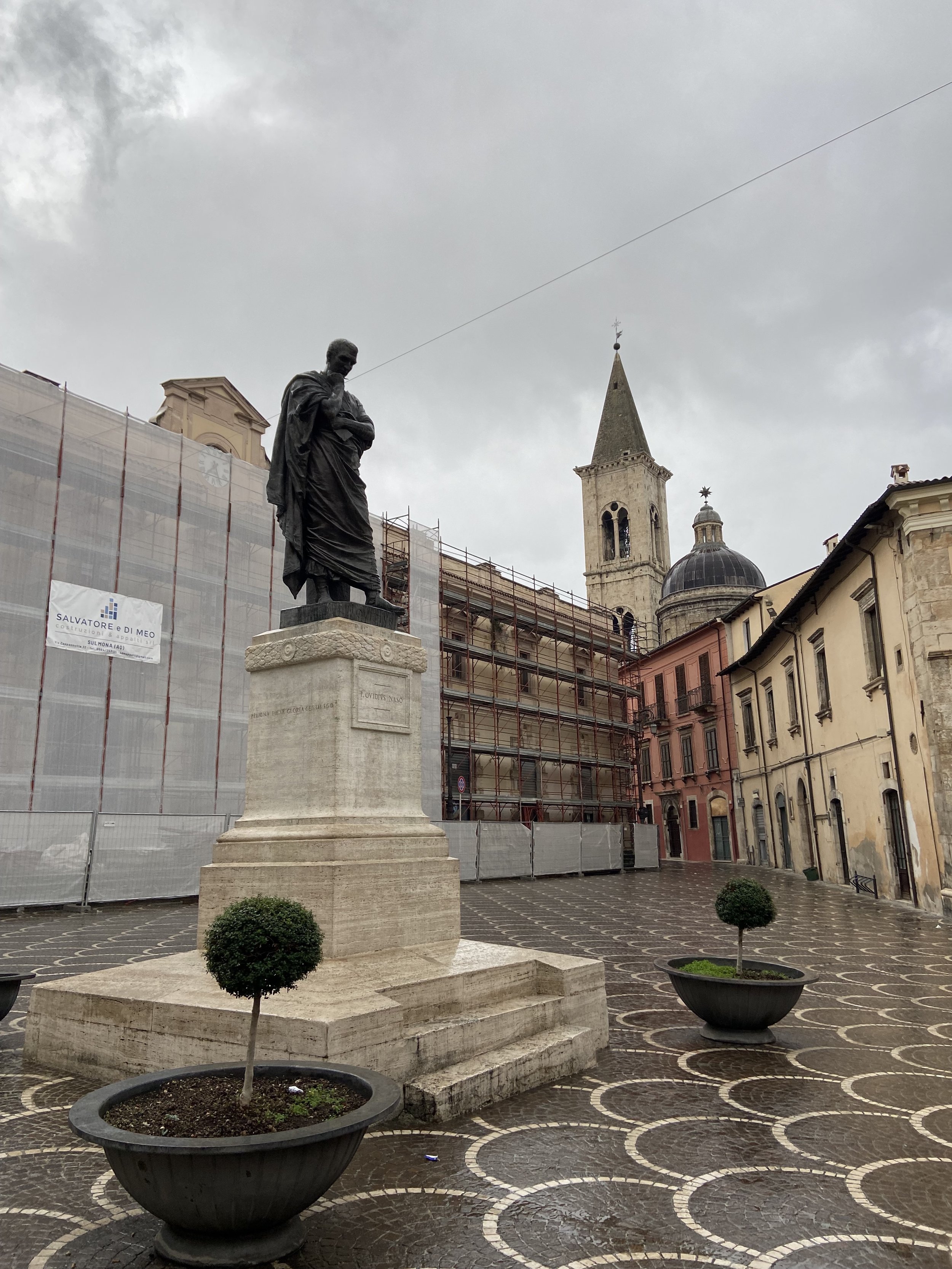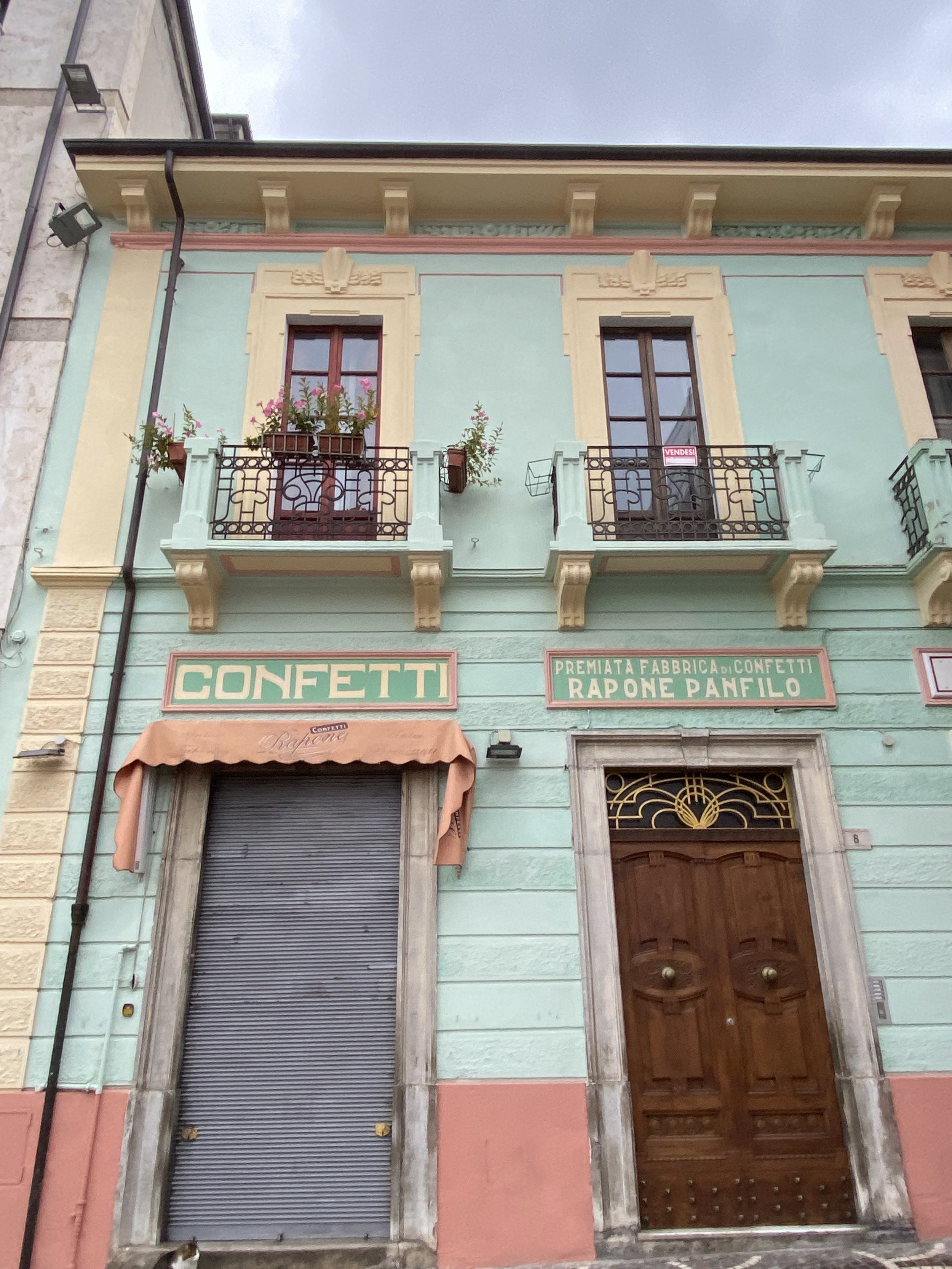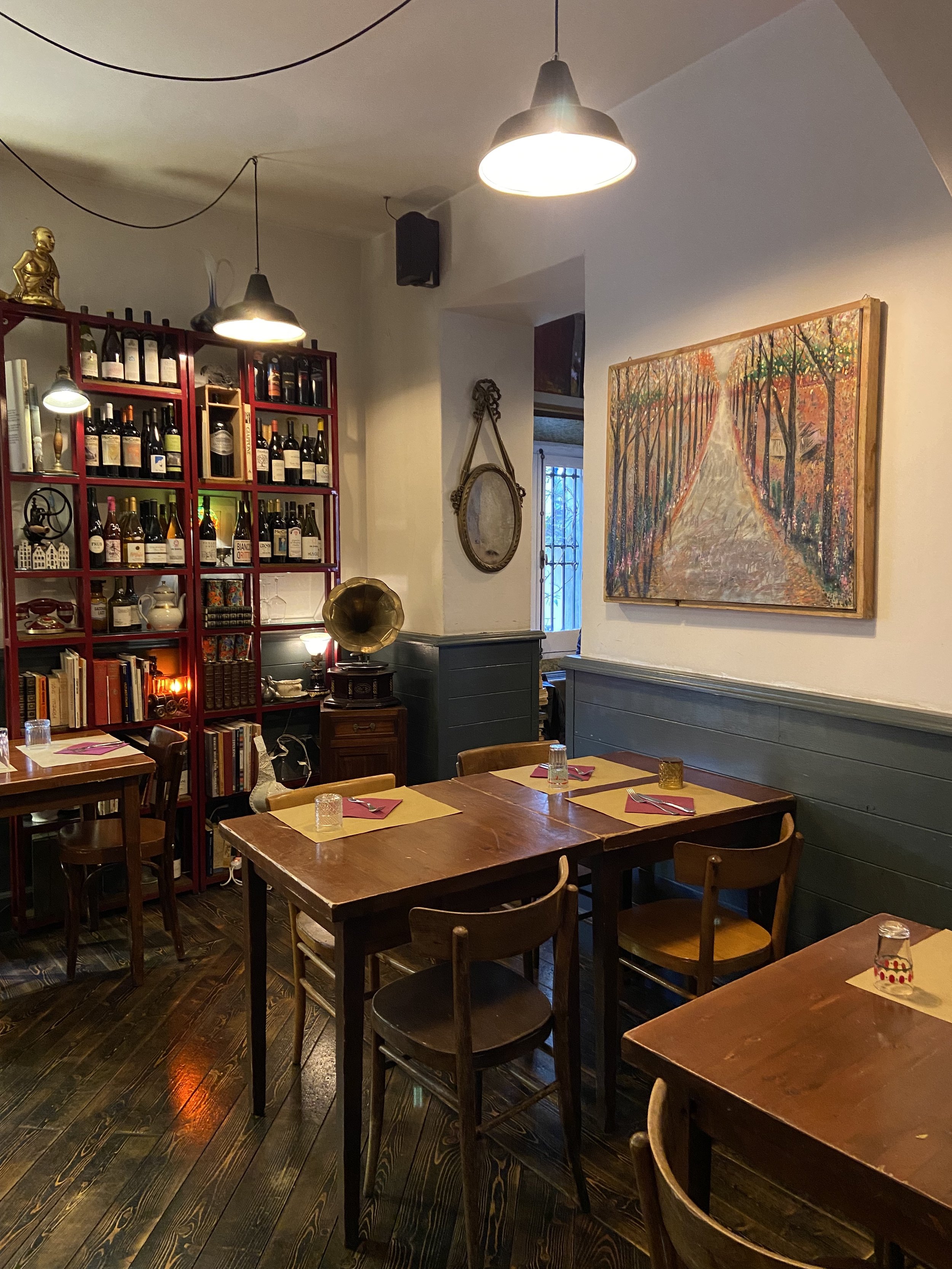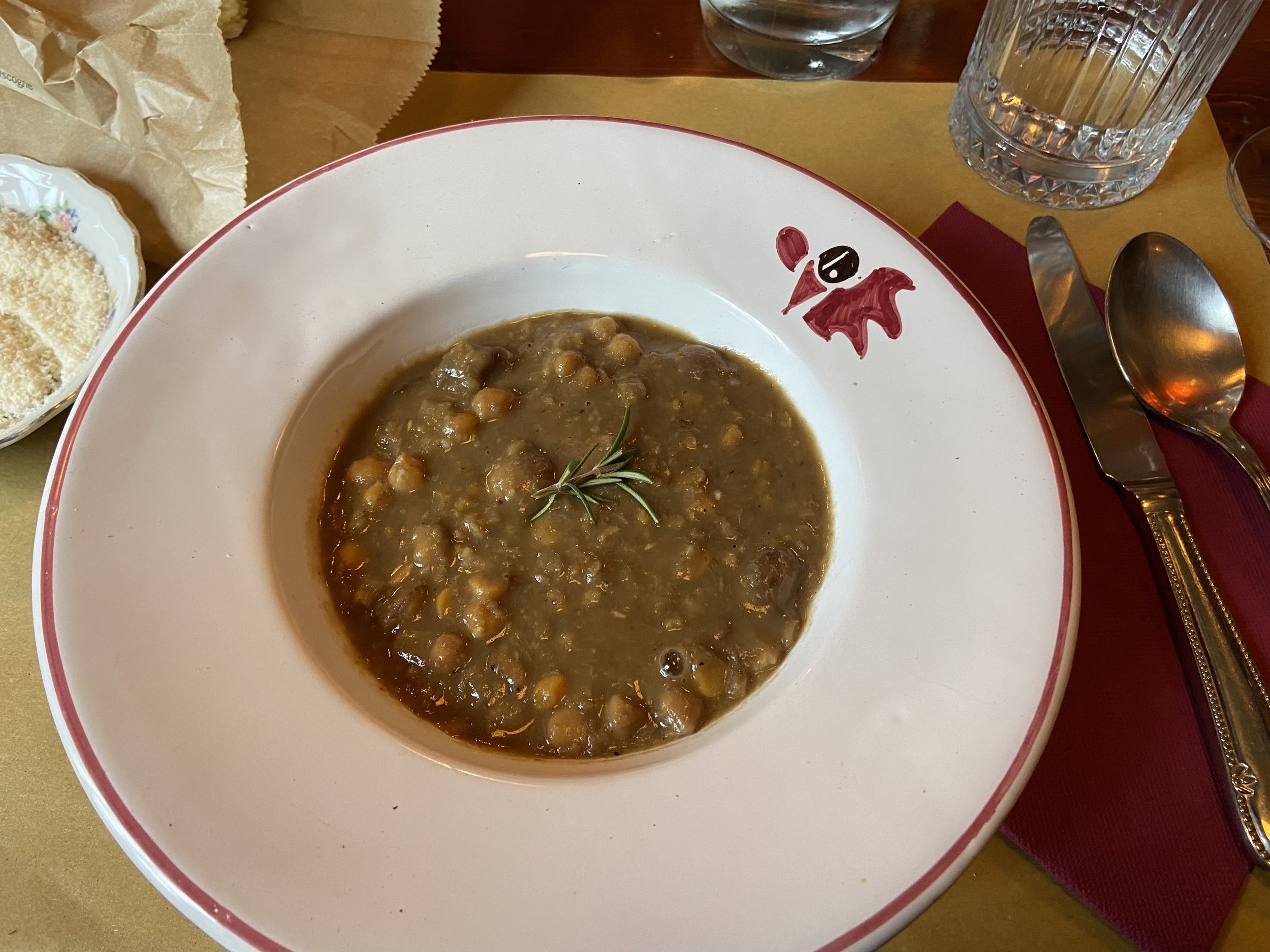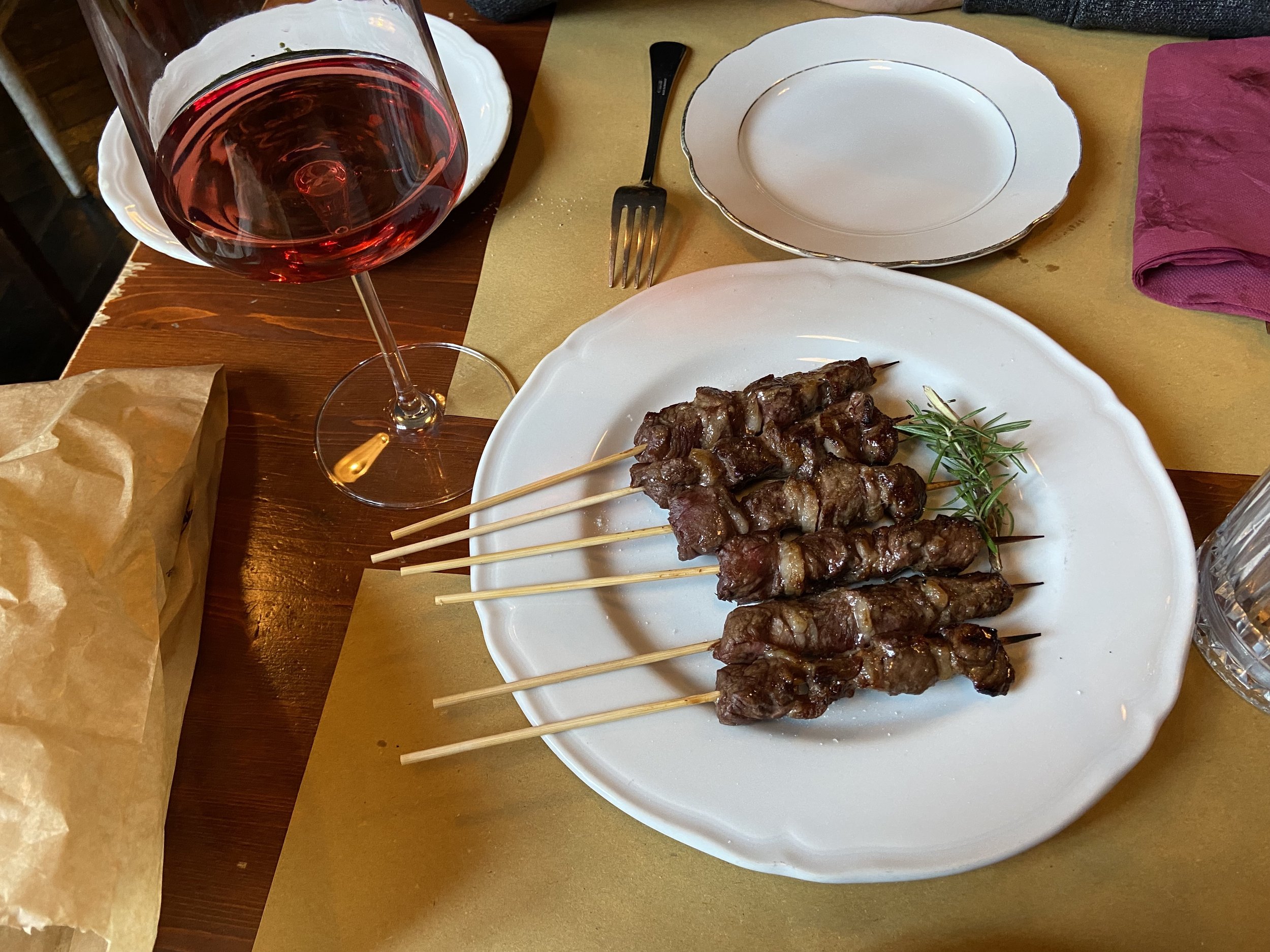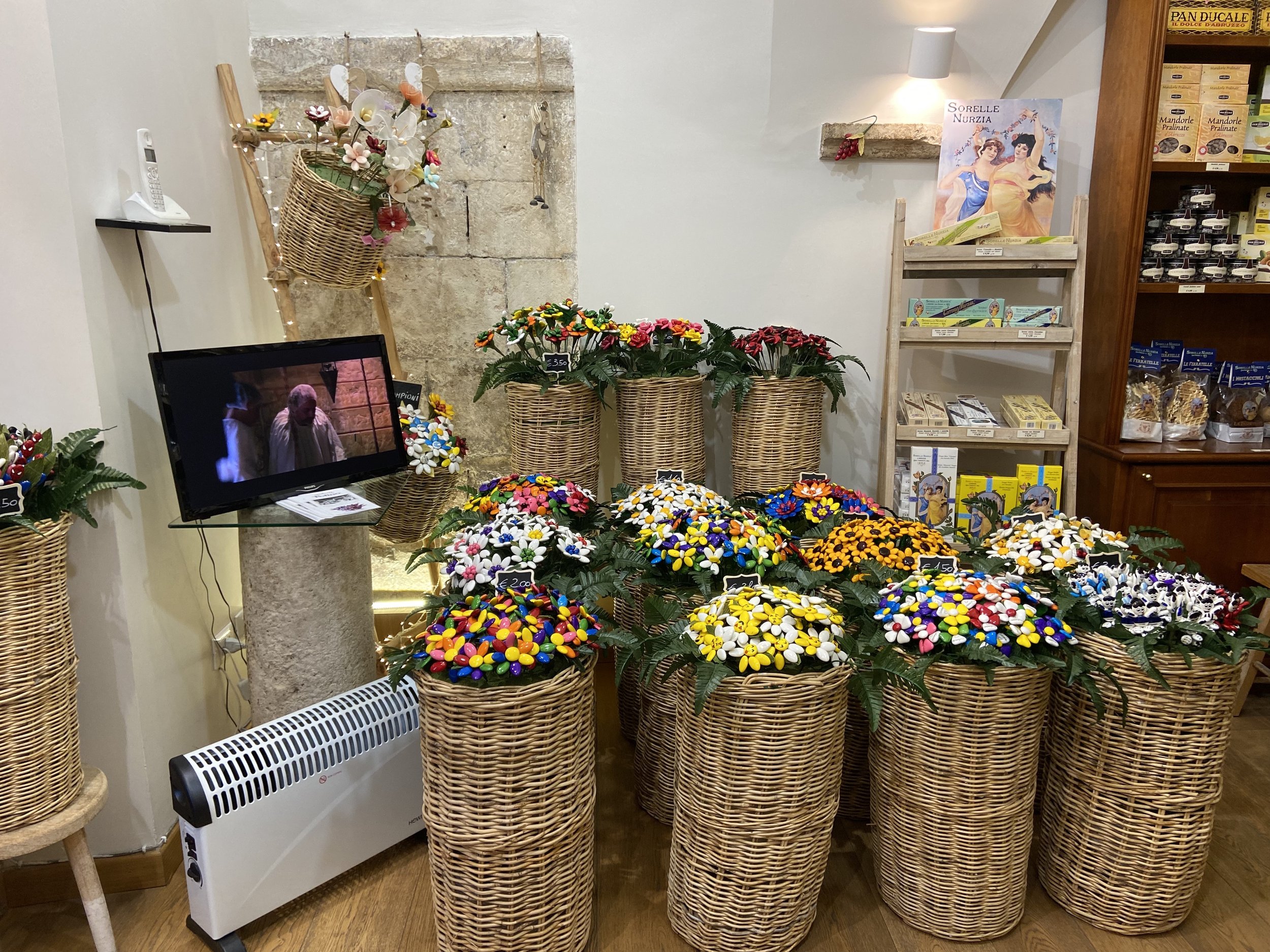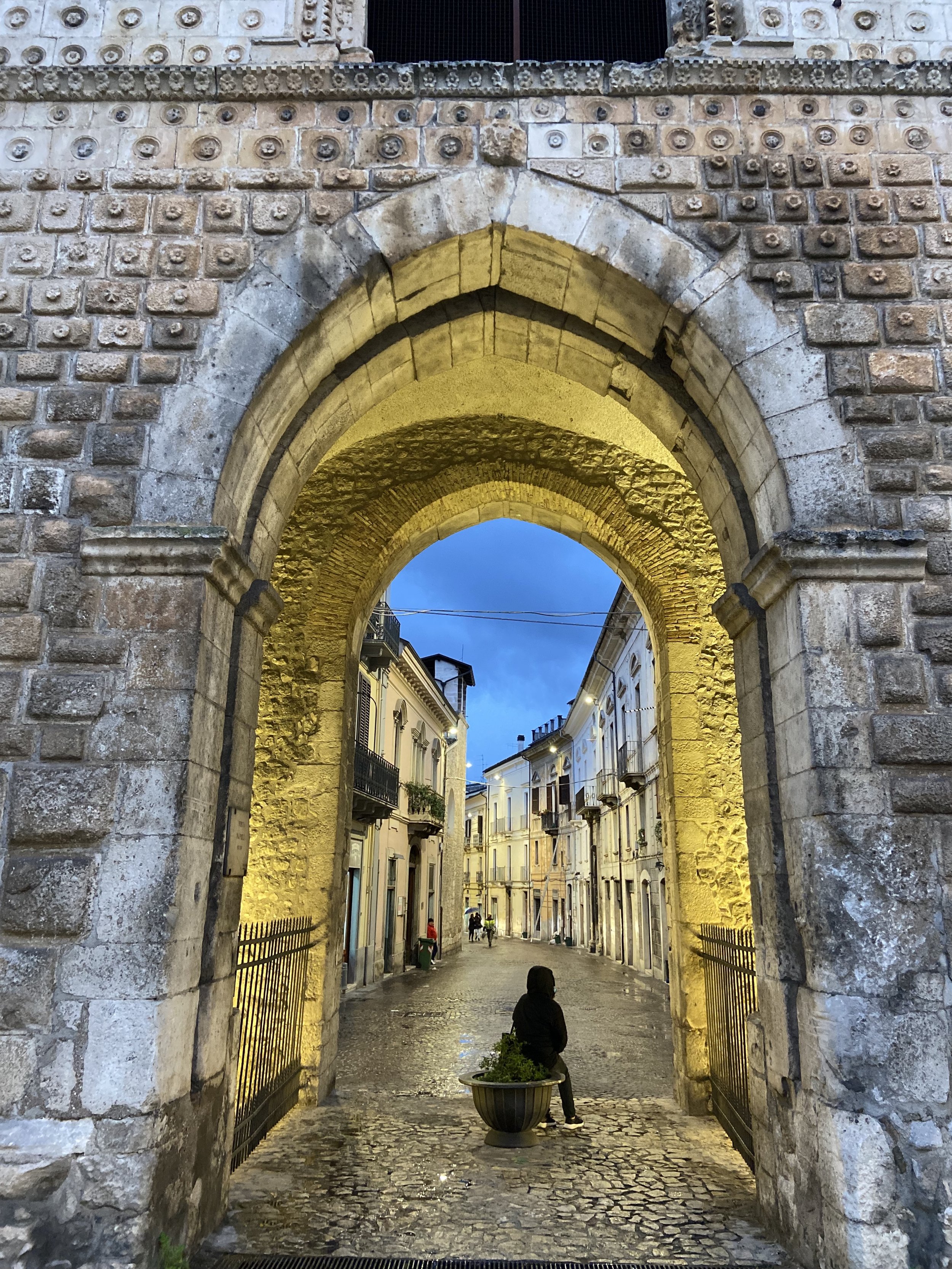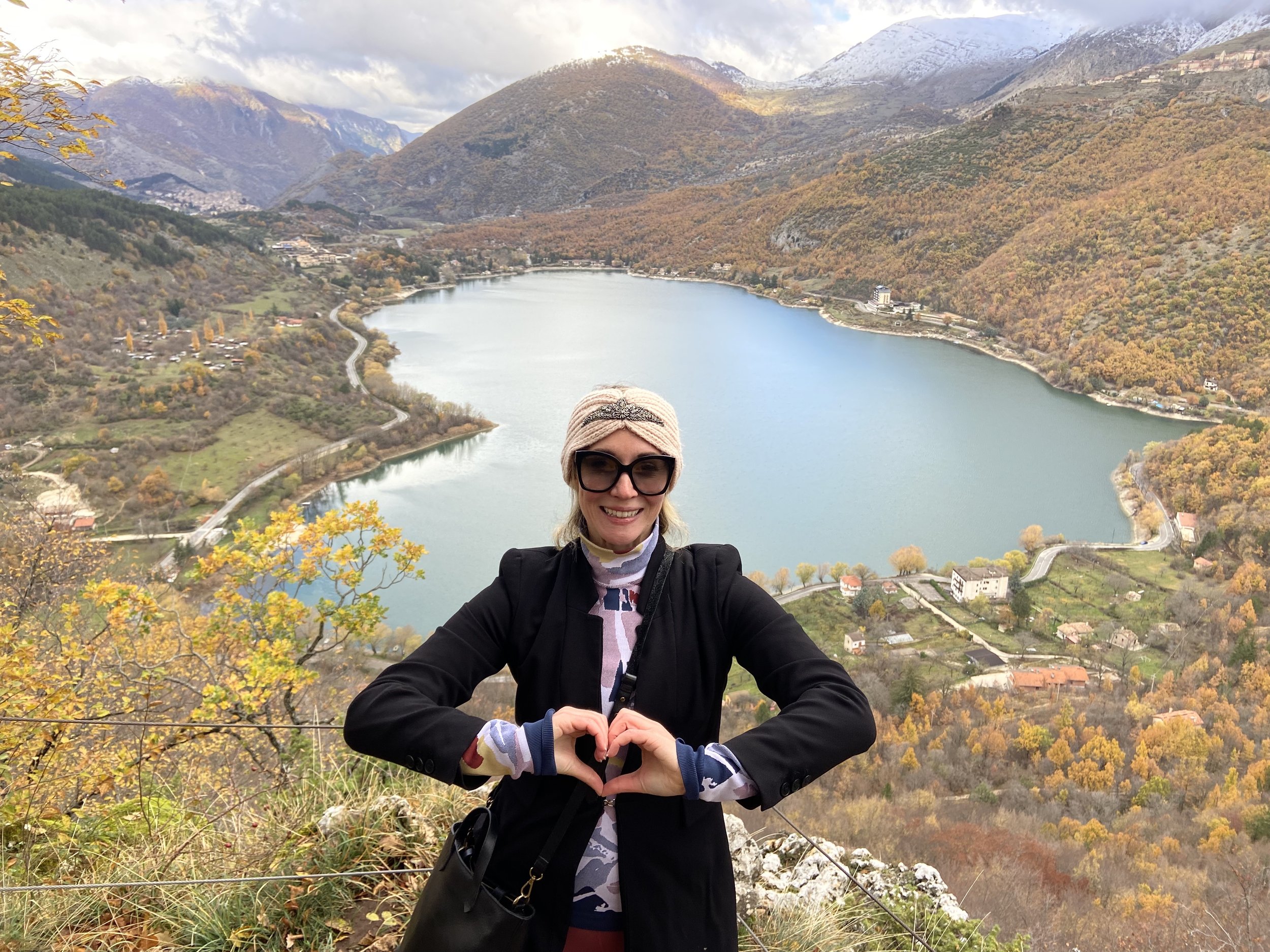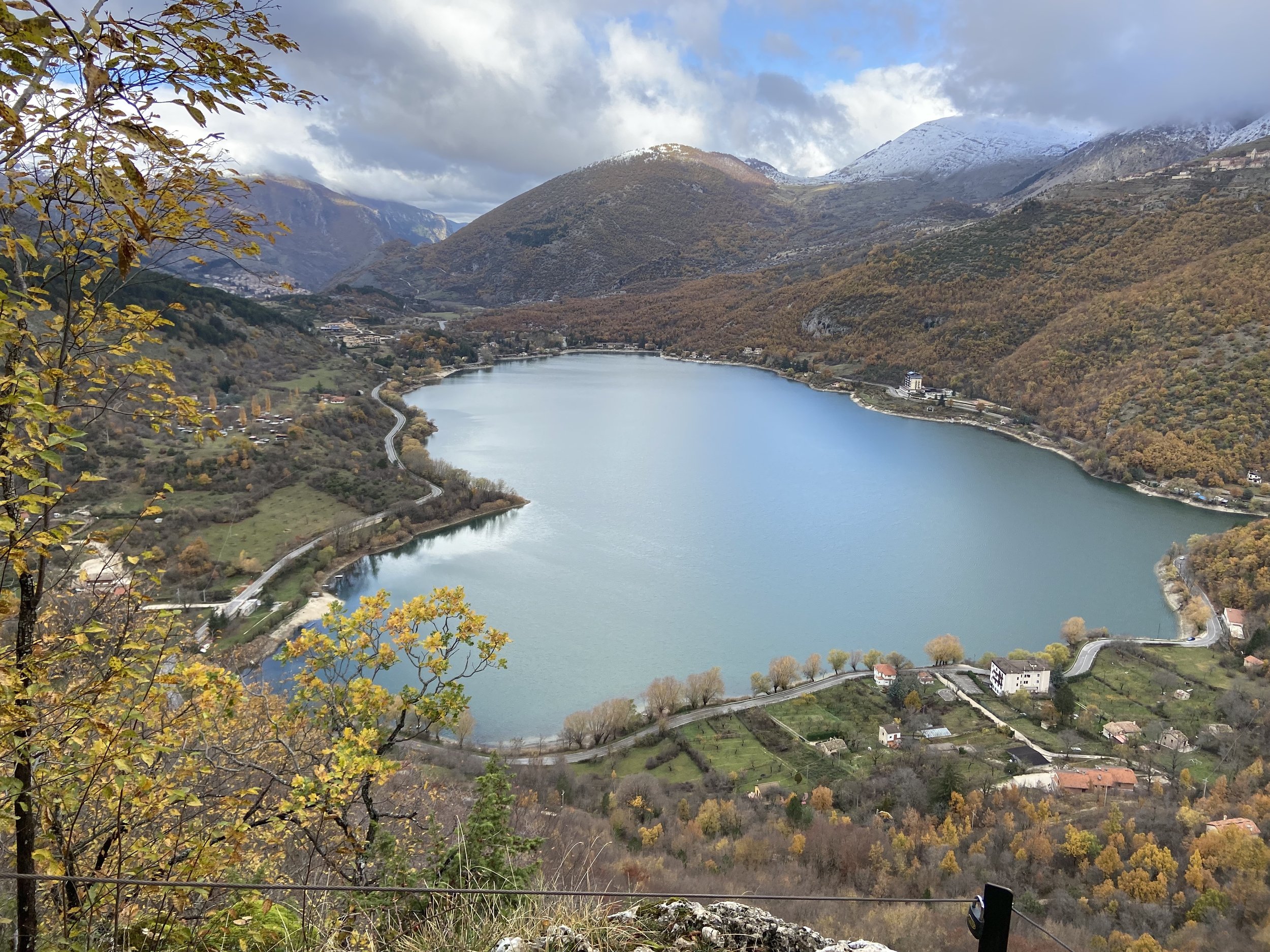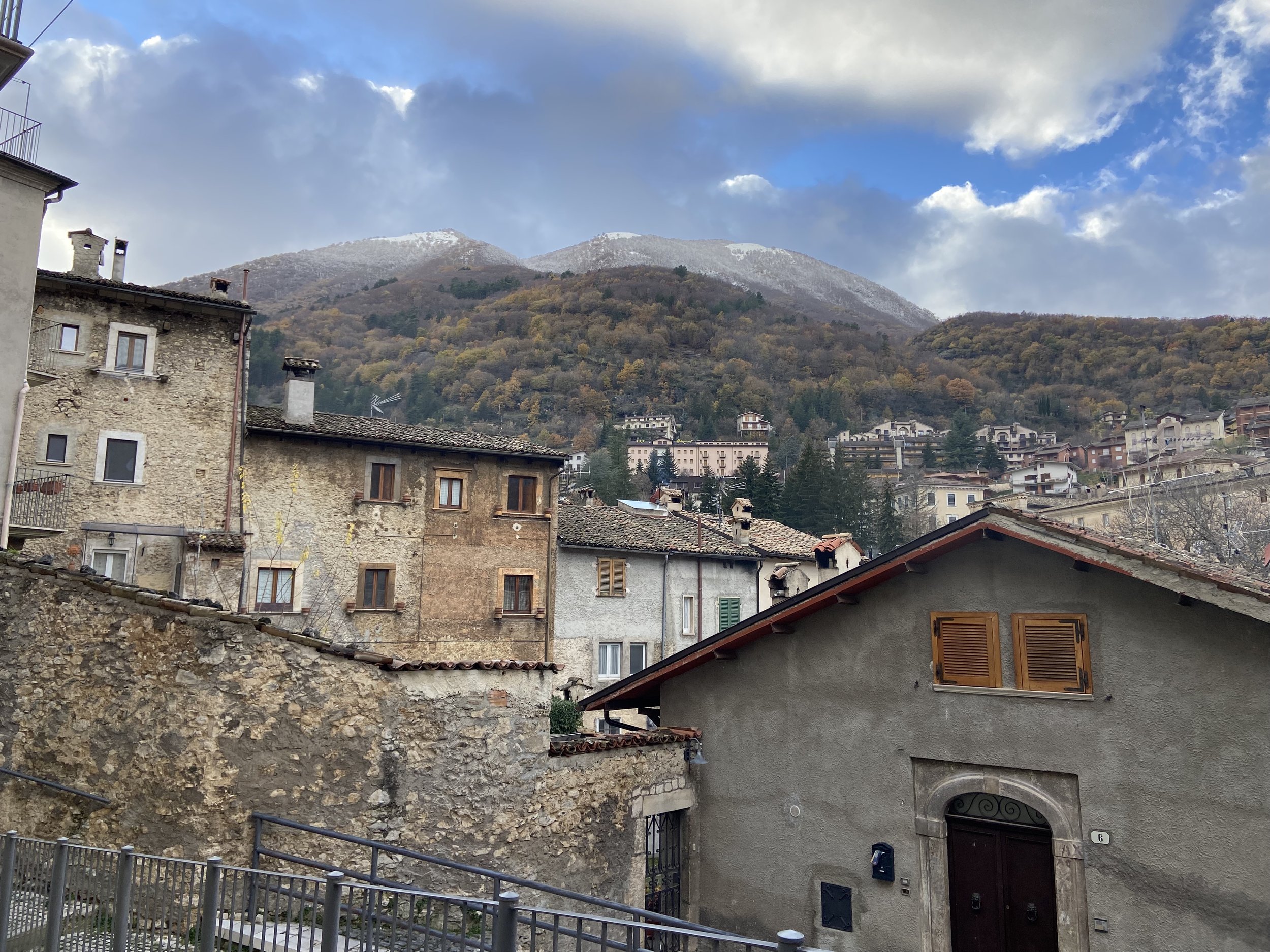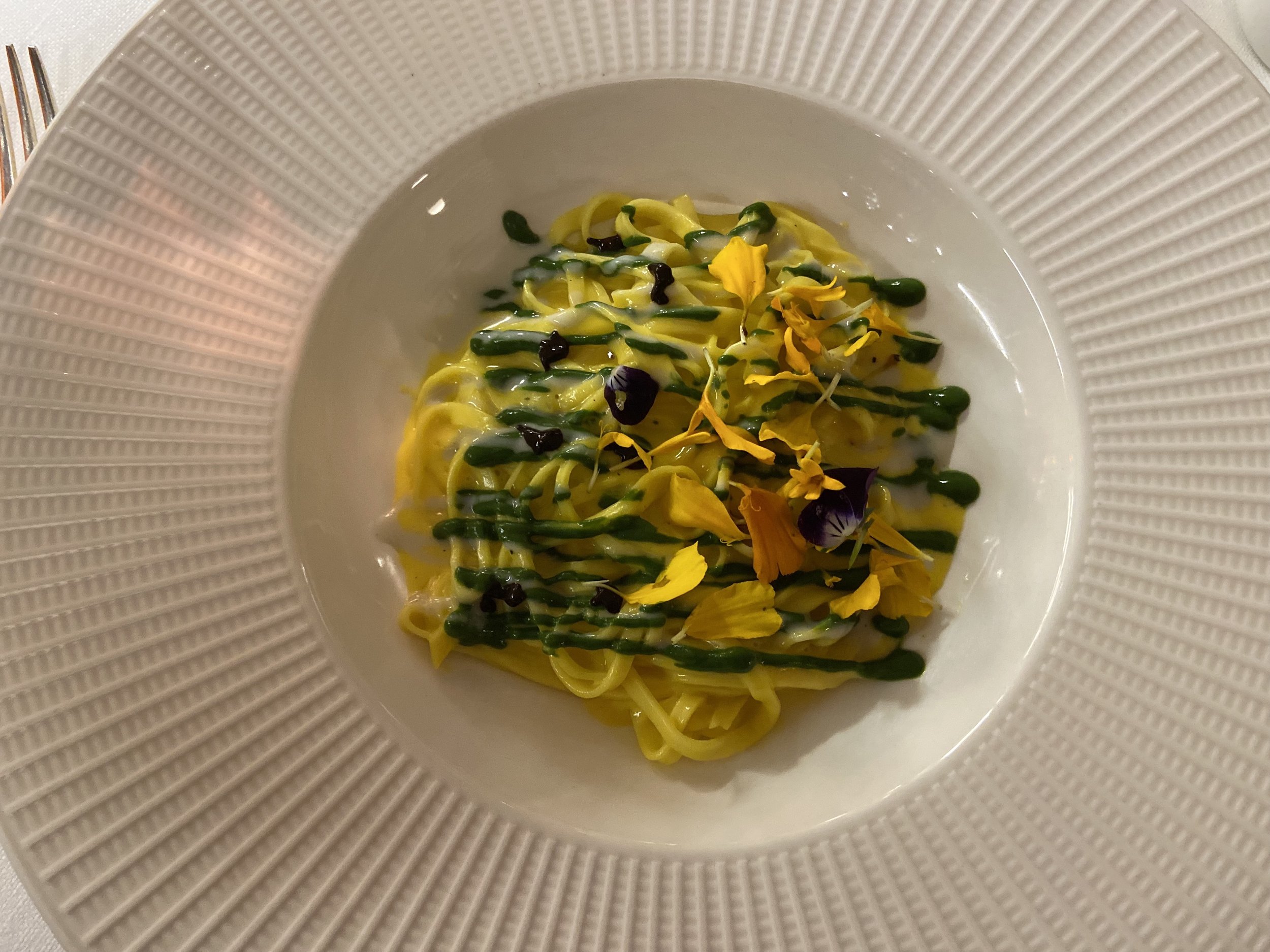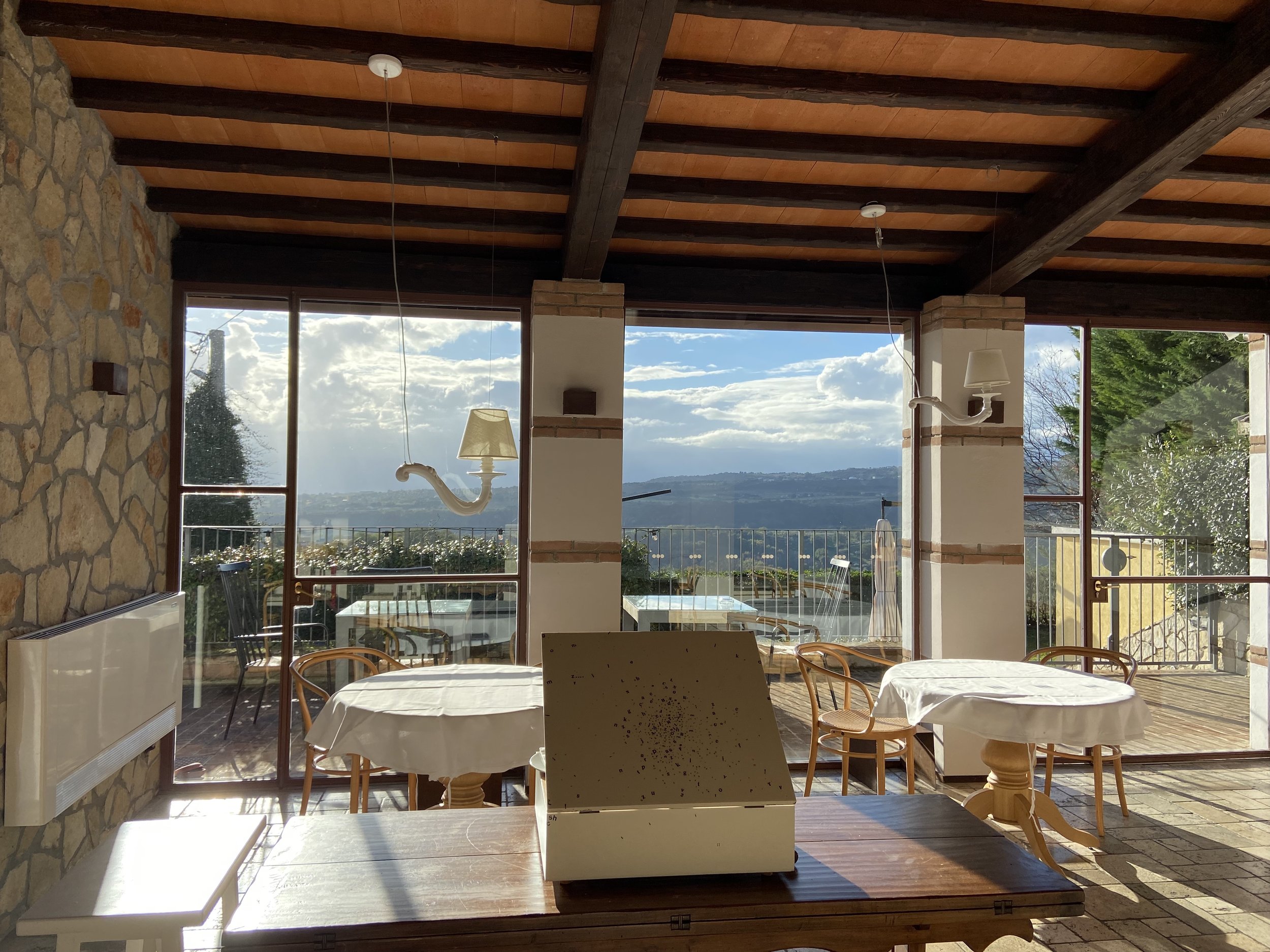Regional Features for 2022- Sulmona and Scanno
Sulmona
I visited L’Aquila, the capital city of Abruzzo, in 2018, and since that trip, I have been itching to go back to this central/southern region of Italy. Thus, for the American holiday of ‘Thanksgiving’ in 2022, I headed back to Abruzzo, firstly to Sulmona, and it is a dream city. To start with, I want to highlight the literary connections, but you must get ready to put your classics hat on. Author of The Metamorphosis (8 CE), that is, the eminent Roman poet Ovid, was born here in Sulmona which was called Sulmo during this era, over 2000 years ago. Thus, needless to say, we are dealing with an ancient town. I found the appearance of modern Sulmona particularly enchanting, however, which is why I encourage you to…
Stroll around and be sure to observe different architectural styles across centuries. Some of the most striking architectural elements are medieval, for example, and even though we visited on a rather rainy grey day, the town showed off. The medieval aqueduct, which dates to 1256, runs through the city center, making a solid landmark to seek out while rambling around the town. And then, there are beautiful modern edifices. I was captivated by the sea foam green facade of an old confetti factory. (Read more about the culture of confetti below.)
Eat at Buonvento Vino e Cucina. This restaurant is another Raisin find, but whether you take or leave natural wine (in fact, not all of the wines they carry are are natural), this restaurant is well worth your time and money. It was particularly cozy inside for a late November lunch with autumnal colors from the floors to walls and on our plate setting and napkins.
We indulged in Abruzzese classics from the antipasti through secondi, starting with Palotte Cacio e Ova. They are literally palotte (balls) of cheese and egg, lightly fried and then simmered in tomato sauce. They are delicious. After this, we had the Chitarra All’Abruzzese, which is pasta made with a type of pasta maker called a ‘chitarra’ because it resembles a guitar and leaves the noodles ribbed, a very satisfying texture when paired with a rich sauce. Read more about these traditional dishes in the Food and Wine post.
We also had a seasonal soup with chickpeas, chestnuts and porcini mushrooms (all in season at the time).
Finally, for a secondo, the pièce de résistance were the arrosticini (or meat lollypops as a friend very aptly coined). For something sweet however…
Pick up gifts at Pelino and not only. Pelino is considered the oldest and perhaps still best established vendor as they were founded in 1783. But you should browse the many stores for confetti on the Corso Ovidio. You will not find ‘confetti’ in the form of multicolored paper pieces but rather as candy coated almonds. Although confetti still plays a significant role in contemporary Italian weddings and celebrations in general, the tradition is in fact ancient like the town of Sulmona itself.
As explained on the Sulmona Live website, the etymology can be traced to “a Latin verb conficere, therefore, confectum – prepared, wrapped.” In classical times, almonds were supposedly covered with flour and honey, not sugar. Now, you can find a variety of colors, flavors, all packaged beautifully and ready to be gifted for special occasions. Indeed, I brought a number of ‘confetti’ themed gifts back to Texas for Christmas 2022. Read more about particular colors and symbolism on the website linked above. The term bomboniere is used to describe traditional party favors, composed of confetti (and often other tangible objects), traditionally given at the end of a wedding ceremony.
When you visit the Pelino store, you will also be dazzled with almonds set into different arrangements, particularly flowers. These, of course, become works of art not edible delights, but they are also special. I picked up a lovely little ‘sunflower’ (my favorite flower) made of ‘confetti’ as a personal souvenir.
Sulmona is a city that dazzles. It is accessible by train from Rome, although the fastest way to access the beauty of this city is by car.
Scanno
I stumbled across a number of pictures featuring a lake in the region of Abruzzo that gained some fame for its special shape. That is, this lake appears to be in the shape of a heart from certain perspectives, and my partner humored me in taking the trip to visit this ‘romantic’ landmark. We went in late autumn which was a nice time as the leaves were changing and the surrounding areas showcased hues of orange, yellow, browns and still some green. There were a few snowy peaks in the distance; however, I have seen pictures of the lake fully snow-covered which also looked lovely. Indeed, the natural beauty of Abruzzo is quite photogenic in every season. It is easiest to access the Lago di Scanno by driving as there are no close train stops. (Busses could be an option, however.)
The Lago di Scanno is special for the shape, but you will find that there are myriad lakes, even just off the roadways in Abruzzo, surprising and dazzling with their beauty. For example, the Lago di San Domenico just ‘happened’ to be on our route to Scanno. It is marvelous.
Once you get near Scanno…
Hike to the upper view point of the lake. There are a number of marked trails around the perimeter of the lake. If you have time, explore widely. If you do not want to explore the upper and lower trails of the lake, I recommend staying above, so that you get the heart-shaped views.
Eat at Trattoria Lo Sgabello after a tour around the natural beauty of the lake. This trattoria is located in the labyrinthine town of Scanno. It is a bit tucked out of the way, below a staircase you need to climb to get into the ‘heart’ of the town, but there are nice views of the mountain landscape surrounding the town from outside the restaurant. This trattoria feels rather casareccia or ‘down home’ as we might say in English. No frills or pretense, low to mid range prices, and very local, traditional dishes on offer. It was nice to mix our culinary experiences between a more contemporary trattoria with some natural wines and the ‘star’ quality dinner (described below).
The house ‘antipasto’ was good enough, but I would say at least one choice from the numerous ‘chitarra’ pasta on offer would be worth your while. They even have a Chitarra alla Scannese (which is the famous pasta from the region with mushrooms, prosciutto, tomato and salty ricotta cheese. We had a very satisfying meal here before heading up the stairs, just nearby to explore Scanno.
Stroll around the town of Scanno itself. The town was inspirational to M.C. Escher, the 20th century Dutch artist known for his “impossible constructions” perhaps lesser known for his fascination with the region of Abruzzo which he “criss-crossed […] with a donkey and horse for company on several occasions during the late 1920s & early 1930s” according to the Life in Abruzzo website. An image from 1929 titled “Scanno” is extremely reminiscent of the views you will get upon visiting the town.
In addition to Escher’s graphic art, Scanno also has earned a reputation for being ‘the photographers’ town’; some of the artists who have immortalized this Abruzzo gem with a camera are Henry Cartier-Bresson (considered the master of candid photography), Mario Giacomelli and Mimmo Jodice.
Bonus Eat and Sleep
For a lovely, more upscale treat, book a room and a table at La Bandiera. The hotel and restaurant is located just about 1 hour from Sulmona and 1 hour and 30 minutes from Scanno. There is not much we visited in the immediate vicinity, although the surrounding landscape is quite stunning. Part of the fun and experience is driving and observing the regional landscape and a jaunt out to La Bandiera offers a lot.
The restaurant has a Michelin star (and is also awarded for sustainability, as they have an impressive garden on the property), but you will find that the menu prices are not outrageous for the caliber and the (merited) acclaim. Like most fine dining establishments, they offer a number of tasting menus and optional wine pairings. Molly, my friend and food blogger, recommended this place, precisely for this reason.
We decided to also book a room, which had a similarly a reasonable price tag for a very cozy but modern and spacious room. It was perfect— warm in literal and figurative terms for our late November stay, and the shower was particularly luxurious. At times I find Italian accommodation to be light on the AC in the summer, and similarly, light on the heating in the winter. Our room at La Bandiera was a very welcome exception. (Of course the more upscale you go the more customizable the experience is, and will cater more towards, shall we say, ‘American’ tastes.)
Another perk is that breakfast is included with the price of the room, and the breakfast, of course, is coming from a Michelin star kitchen. This is always a nice bonus that I look out for now after some good experiences such as this one.
